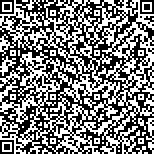杜新新,王强,孟萍萍,等.肌电生物反馈强化训练对脑卒中后吞咽障碍患者吞咽功能的影响[J].中华物理医学与康复杂志,2019,41(6):411-415
扫码阅读全文

|
| 肌电生物反馈强化训练对脑卒中后吞咽障碍患者吞咽功能的影响 |
|
| |
| DOI:DOI:10.3760/cma.j.issn.0254-1424.2019.06.003 |
| 中文关键词: 脑卒中 吞咽障碍 肌电生物反馈疗法 舌骨运动速率 视频透视吞咽检查 |
| 英文关键词: Stroke Dysphagia Electromyography Biofeedback Hyoid bone excursion Videofluoroscopy Swallowing |
| 基金项目:山东省自然科学基金(ZR2014JL057) |
|
| 摘要点击次数: 6646 |
| 全文下载次数: 6488 |
| 中文摘要: |
| 目的 观察不同时间肌电生物反馈治疗(EMGBF)对脑卒中后吞咽障碍患者吞咽功能及舌骨喉复合体运动速率的影响。 方法 选取我院42例脑卒中后咽期吞咽功能障碍患者,按照随机数字表法将患者分为常规组(15例)、EMGBF组(14例)和强化EMGBF组(13例)。3组患者均给予神经科常规药物治疗及运动功能康复训练,在此基础上常规组给予常规吞咽功能训练,每日30 min,每周5 d;EMGBF组在常规吞咽功能训练基础上增加1次肌电生物反馈治疗,每日1次,每周5次;强化EMGBF组在常规吞咽功能训练基础上增加2次肌电生物反馈治疗,每日2次,每周10次。所有患者均治疗4周。分别于治疗前、治疗4周后(治疗后),进行吞咽造影检查(VFSS),测量舌骨在吞咽半流质食物时向前、向上的运动幅度、时间,计算运动速率,采用吞咽障碍程度评定、Rosenbek渗透-误吸量表(PAS)对3组患者进行评定。 结果 治疗前,3组患者吞咽障碍程度、PAS评分、舌骨前移运动速度、舌骨上移运动速度比较,差异无统计学意义(P>0.05)。与组内治疗前比较,3组患者治疗后吞咽障碍程度、PAS评分、舌骨前移运动速度、舌骨上移运动速度均有所改善(P<0.05)。治疗后,与常规组比较,EMGBF组和强化EMGBF组吞咽障碍程度评分均较高(P<0.05)、PAS评分较低(P<0.05),强化EMGBF组治疗后吞咽障碍程度评分虽然高于EMGBF组,但差异无统计学意义(P>0.05),强化EMGBF组治疗后PAS评分[(2.38±1.19)分]低于EMGBF组[(3.57±1.45)分],差异有统计学意义(P<0.05)。与常规组治疗后比较,EMGBF组和强化EMGBF组舌骨前移、上移运动速度均较高(P<0.05)。与EMGBF组治疗后比较,强化EMGBF组舌骨前移[(34.10±12.67)mm/s]、上移运动速度[(34.30±9.16)mm/s]较高(P<0.05)。 结论 肌电生物反馈强化训练在改善吞咽障碍患者吞咽功能及提高舌骨喉复合体运动速率方面优于常规吞咽训练及肌电生物反馈训练。 |
| 英文摘要: |
| Objective To evaluate the effect of intensive electromyographic biofeedback (EMGBF) on swallowing and the velocity of hyolaryngeal excursion among stroke survivors with dysphagia. Methods Forty-two stroke survivors with dysphagia were randomly divided into a conventional rehabilitation group (group A, n=15), an EMGBF group (group B, n=14) and an intensive EMGBF group (group C, n=13).In addition to routine medications and motor function rehabilitation training, all received 30 minutes of conventional swallowing training once a day, 5 days per week for 4 weeks. Group B additionally received 15 minutes of EMGBF once daily and group C twice daily. Videofluoroscopy was conducted to measure the superior and anterior excursion distances and the movement time of the hyoid bone when swallowing semi-liquid food, and the velocity was calculated. The swallowing dysfunction evaluation and a penetration-aspiration scale (PAS) were also employed to evaluate the subjects′ swallowing function before and after the treatment. Results There were no significant differences among the 3 groups in any of the measurements before the treatment. After the 4 weeks of treatment the average swallowing dysfunction evaluation and PAS scores of all three groups had improved significantly, as had the superior and anterior excursion velocity of the hyoid bone. Compared with group A, the average swallowing dysfunction evaluation and PAS scores of groups B and C had improved significantly more. The average swallowing dysfunction evaluation scores of groups B and C were not significantly different, but the average anterior and superior excursion velocity of the hyoid bone in group C was significantly higher than in group B. Conclusion EMGBF therapy has advantages over routine rehabilitation training in improving swallowing function after a stroke and speeding the velocity of the hyoid bone′s excursions. |
|
查看全文
查看/发表评论 下载PDF阅读器 |
| 关闭 |